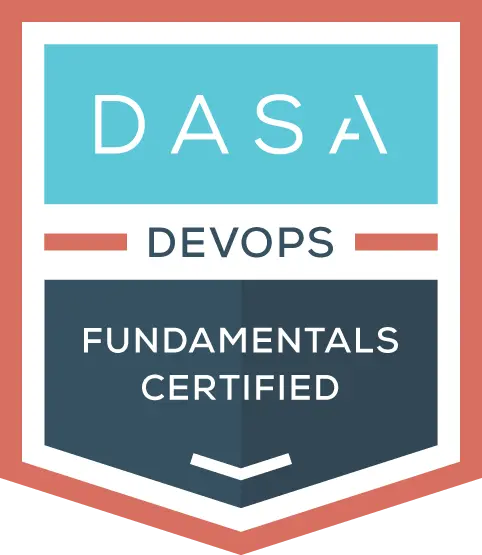Biases and myths about people and culture often cloud understanding and implementation in an organization, especially as they work towards an essential but often disruptive Agile transformation. This article delves into these misconceptions, offering insights on fostering a truly Agile culture. By examining principles through the allegory of the popular TV show, “Squid Game,” we can unmask and address these myths to achieve more effective Agile transformations.
The series “Squid Game” highlights the deeper motivations of its characters beyond the apparent desire for financial gain; most of the characters align with a higher purpose, pushing them to participate in the dangerous, high-stress game and keeping them motivated. Similarly, in an Agile transformation, understanding and aligning with a higher purpose can significantly enhance team motivation and engagement. Employees, like the characters in “Squid Game,” often have personal and professional goals that drive their commitment. Identifying and fostering these motivations can lead to a more dedicated and resilient workforce.
Organizations should strive to articulate a clear and compelling vision that resonates with their employees’ values and aspirations. This shared vision can unify teams, providing direction and meaning to their work. Encouraging employees to connect their personal goals with the company’s mission can foster a culture of purpose and collaboration.
Myth 1: Organizational Culture Change Happens Automatically
One common myth is that organizational culture will naturally evolve alongside Agile transformations. However, cultural change requires intentional effort and leadership. In “Squid Game,” players are thrust into a survival scenario, which initially creates a culture of self-preservation. Over time, they learn that cooperation is often a more effective strategy. This transition parallels the need for deliberate cultural change in organizations.
To cultivate a culture of collaboration and continuous improvement, organizations must actively promote learning and experimentation. This includes providing training, encouraging feedback, and modeling Agile principles at all levels of the organization. Leaders play a crucial role in this transformation by demonstrating and reinforcing desired behaviors and values.
Leadership must prioritize cultural transformation as much as process changes. By embodying Agile values and fostering an environment of trust and psychological safety, leaders can help teams navigate the transition from traditional to Agile ways of working. This approach requires a shift from directive to servant leadership, where leaders support and empower their teams.
Myth 2: Agile Work Environments Are Automatically Inclusive
Another myth is that Agile environments naturally foster inclusivity due to their focus on collaboration and teamwork. In “Squid Game,” the concept of inclusion is highlighted through the character of Player 212, who, despite being initially excluded, ultimately advances due to a unique twist in the rules. This underscores the need for intentional efforts to ensure inclusivity in Agile teams.
Inclusivity goes beyond diversity; it involves actively creating an environment where all team members feel valued and included in decision-making processes. Agile transformations should incorporate strategies to promote diversity and inclusion, such as diverse hiring practices, inclusive meeting structures, and continuous monitoring of team dynamics to ensure all voices are heard.
Organizations can take several steps to enhance inclusivity within Agile teams. These include conducting regular inclusion training, establishing clear norms for inclusive behavior, and creating channels for anonymous feedback to identify and address any inclusivity issues. By embedding these practices into the Agile framework, teams can ensure a more cohesive and collaborative environment.
Myth 3: Working Agile Means Saying Goodbye to Formal Hierarchies
The final myth is that Agile transformations eliminate the need for formal hierarchies and leadership structures. In “Squid Game,” informal leadership emerges naturally as characters navigate the challenges. This mirrors the Agile principle of self-organizing teams, but it does not mean that formal leadership is obsolete.
Agile organizations still require leadership, but the role of leaders shifts from command-and-control to enabling and supporting teams. Adaptive leaders provide vision and direction while empowering teams to make decisions and drive their work. This approach fosters a balance between guidance and autonomy, ensuring teams have the support they need while retaining the flexibility to innovate.
Organizations should invest in developing leaders who are adept at managing through influence rather than authority. Training programs focused on servant leadership, emotional intelligence, and adaptive leadership can equip leaders with the skills necessary to thrive in an Agile environment. By fostering a leadership culture that values empowerment and collaboration, organizations can better navigate the complexities of Agile transformations.
Conclusion
Agile transformations are complex and multifaceted, requiring intentional efforts to dispel myths and foster a culture of collaboration, inclusivity, and continuous improvement. The lessons from “Squid Game” emphasize the importance of safety and trust in high-pressure environments. In Agile transformations, creating a safe and supportive environment is crucial for team members to express themselves and take risks. Trust-building activities, transparent communication, and a focus on psychological safety can help establish this foundation.
Agile transformations thrive on cooperation and continuous learning. Encouraging experimentation, learning from failures, and fostering a culture of knowledge sharing can drive innovation and improvement. Organizations should create structures and processes that support ongoing learning and adaptation. Finally, empathetic leadership is essential in guiding teams through the uncertainties of Agile transformations. Leaders must be flexible, supportive, and attuned to the needs of their team members. By prioritizing empathy and understanding, leaders can help their teams navigate change and achieve collective success. By embracing these principles and learning from real-world examples, organizations can more effectively navigate the journey toward Agile maturity and drive sustainable success.


DASA DevOps Certification Program
DASA DevOps Certification Program equips you with the foundational skills to understand and implement key DevOps principles. You’ll learn how to foster collaboration across teams, streamline workflows, and accelerate delivery cycles—all while ensuring your organization is prepared for long-term digital transformation.
